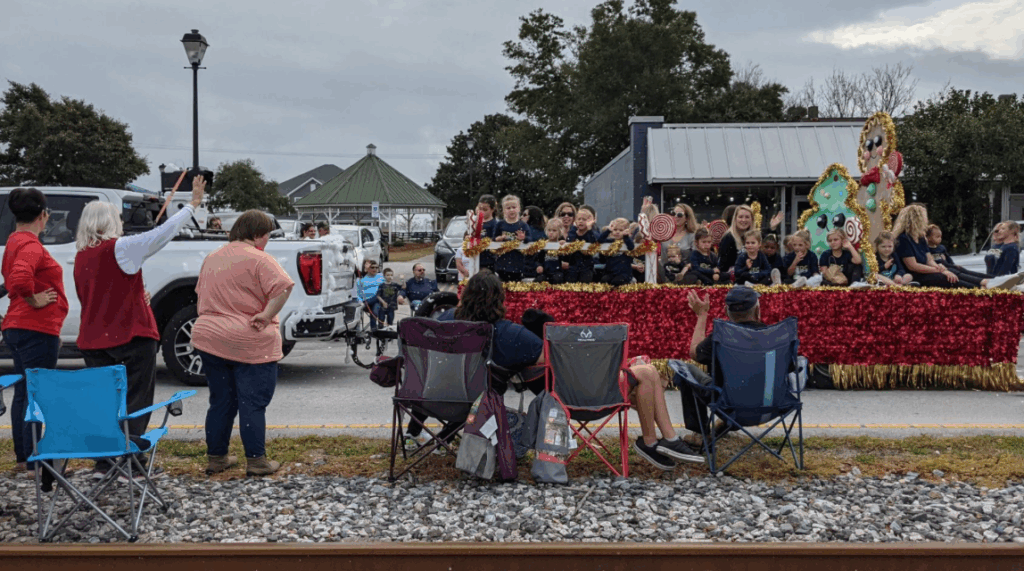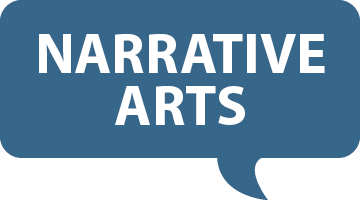Blog
Youth Media and Third Places: Mapping Belonging in Carteret County
In a time of rising loneliness and shrinking civic spaces, Carteret County youth built a map of belonging—showing how youth media can strengthen democracy, community health, and intergenerational connection. The project reveals how giving young people tools, trust, and a platform transforms them from participants in civic life into authors of public culture.
Third Places as Civic Infrastructure
The assignment was straightforward: map “third spaces”—barbershops, libraries, parks, cafés. These third spaces are where community life unfolds beyond home and work, and they are crucial to curing the epidemic of loneliness.
Research underscores what the youth discovered in practice: third places are powerful “community builders” (Butler & Diaz, 2016) that reduce isolation (Harvard University, Making Caring Common Project, 2021) and create conditions for belonging (Willis, 2022).
With the Morehead City Library as home base, youth reporters fanned out to identify “third places,” the kinds of settings Ray Oldenburg described as essential for civic health. They asked neighbors how these rooms loosen the grip of loneliness in a digital age. Then they returned to the library to shape what they heard into a multimedia story.

Community members gather in a Morehead City park to watch a parade. Photo by Autumn Ware.
From Podcast Assignment to Cultural Authorship
This summer’s project in Carteret County was never just about learning how to hold a mic or cut tape. It was about recognizing young people as authors of public culture—equipping them with the tools and trust to document the world through their own eyes.
At its strongest, youth media is democracy in practice: a rehearsal space where young people learn that their lives and ideas belong in the public sphere, and that storytelling can operate as a form of collective power (Parry, Howard, & Penfold, 2020).
Lead trainer Autumn Ware, who directs programming at Epic Carteret, designed the project as an invitation into authorship. She understood that place in small towns is more than geography—it is shared story, collective memory, and a stage for civic life. By asking youth to document third places, she asked them to see themselves as cultural workers whose questions shape their community.
Libraries as Anchors of Belonging
The library was the perfect hub. Director Daniella Mitchell had recently taken the helm, eager to bring more teens through the doors. Their missions aligned, and the doors opened.
Because some of these teens had never interviewed anyone before, the learning was immediate. Filmmaker Olivia Van Sickle and coffee shop manager Sarah Baldwin joined to support, guiding teens in listening deeply and asking follow-ups. In one barbershop, owner Simon Martin described being welcoming as a five-sense experience—bright rooms, lively sound, cool air, and names remembered. He joked he was an “unofficial therapist” because clients opened up in the chair in ways they didn’t anywhere else.
Libraries, the youth found, remain among the last public spaces. From knitting circles to book clubs to outreach at nursing homes, the library functioned as a third space where belonging and mental health support quietly unfolded.

Youth media producers in Carteret County interview neighbors and explore local third places.
Youth Media as Access and Humanistic Communication
What Carteret County youth created is more than a podcast episode. It is an act of access. Access means lowering barriers so ordinary voices shape public life (Couldry, 2010).
In these interviews, teens were not passive consumers. They became interviewers, producers, and editors. They learned to improvise, to ask follow-ups, and to listen deeply. They created not just a story, but a civic experience where they themselves belonged (Roth & Brooks-Gunn, 2015).
Third places mirrored the media-making process itself: a library became a production studio; a barbershop became a commons; a pottery shop became a classroom. These are infrastructures where community media happens—welcoming, intergenerational, and rooted in local culture (de la Fuente Prieto, Martínez-Borda, & Lacasa Díaz, 2020).
The Ripple Effect: From Youth Stories to Community Action
The project is already rippling outward. The group hosted a community share-out where the youth presented their process and invited local neighbors to reflect on what “third spaces” mean to them.
At the event, the youth played the audio they had created and shared the body of work they developed. This sparked a conversation about belonging, community, and how shared spaces support resilience. Neighbors engaged actively, offering their own reflections and stories.
The group expressed hopes of doing more share-outs in the future, using this format to spread their content more widely. They are also exploring ways to share documentation online and offline—to build momentum, deepen connections, and invite new voices into the process.
🎧 Learn more about the Coastal Youth Media project
Conclusion: A Call for Investment
Carteret County youth showed that when young people are given the tools of authorship, they don’t just produce content—they strengthen the connective tissue of democracy. They mapped belonging in their community, created new intergenerational ties, and modeled how youth media can serve as a civic infrastructure for health, equity, and culture.
This project demonstrates that even modest investments such as stipends for youth, a local hub like the library, or a trainer to guide the process can yield outsized returns: empowered youth, stronger communities, and replicable models of participatory communication.
Third places do not single-handedly solve loneliness, but they create the conditions where connection can find you—and where democracy is practiced one story, one conversation, one youth voice at a time.
This story is part of Coastal Youth Media, a Narrative Arts initiative amplifying youth voices across coastal North Carolina. Learn more about Coastal Youth Media →
Narrative Arts advances community storytelling to strengthen democracy, equity and belonging. Explore our work –>
Interested in working with us or supporting this effort? Contact us here –>
References
- Butler, S. M., & Diaz, C. (2016, September 14). “Third places” as community builders. Brookings Institution. https://www.brookings.edu/articles/third-places-as-community-builders/
- Couldry, N. (2010). Why voice matters: Culture and politics after neoliberalism. SAGE Publications.
- de la Fuente Prieto, J., Martínez-Borda, R., & Lacasa Díaz, P. (2020). Guided participation in youth media practices. Culture & Society. https://journals.openedition.org/cs/2227
- Harvard University, Making Caring Common Project. (2021). Loneliness in America. https://mcc.gse.harvard.edu/reports/loneliness-in-america
- Parry, R., Howard, F., & Penfold, L. (2020). Negotiated, contested and political: The disruptive third spaces of youth media production. Learning, Media and Technology, 45(4), 409–421. https://doi.org/10.1080/17439884.2020.1754238
- Roth, J. L., & Brooks-Gunn, J. (2015). Evaluating youth development programs: Progress and promise. Applied Developmental Science, 19(3), 121–133. https://doi.org/10.1080/10888691.2014.972558
- Willis, W. (2022). A place where we belong: A multiverse of community engagement. National Civic Review, 111(3), 5–9. https://www.nationalcivicleague.org/ncr-article/a-place-where-we-belong-a-multiverse-of-community-engagement/
